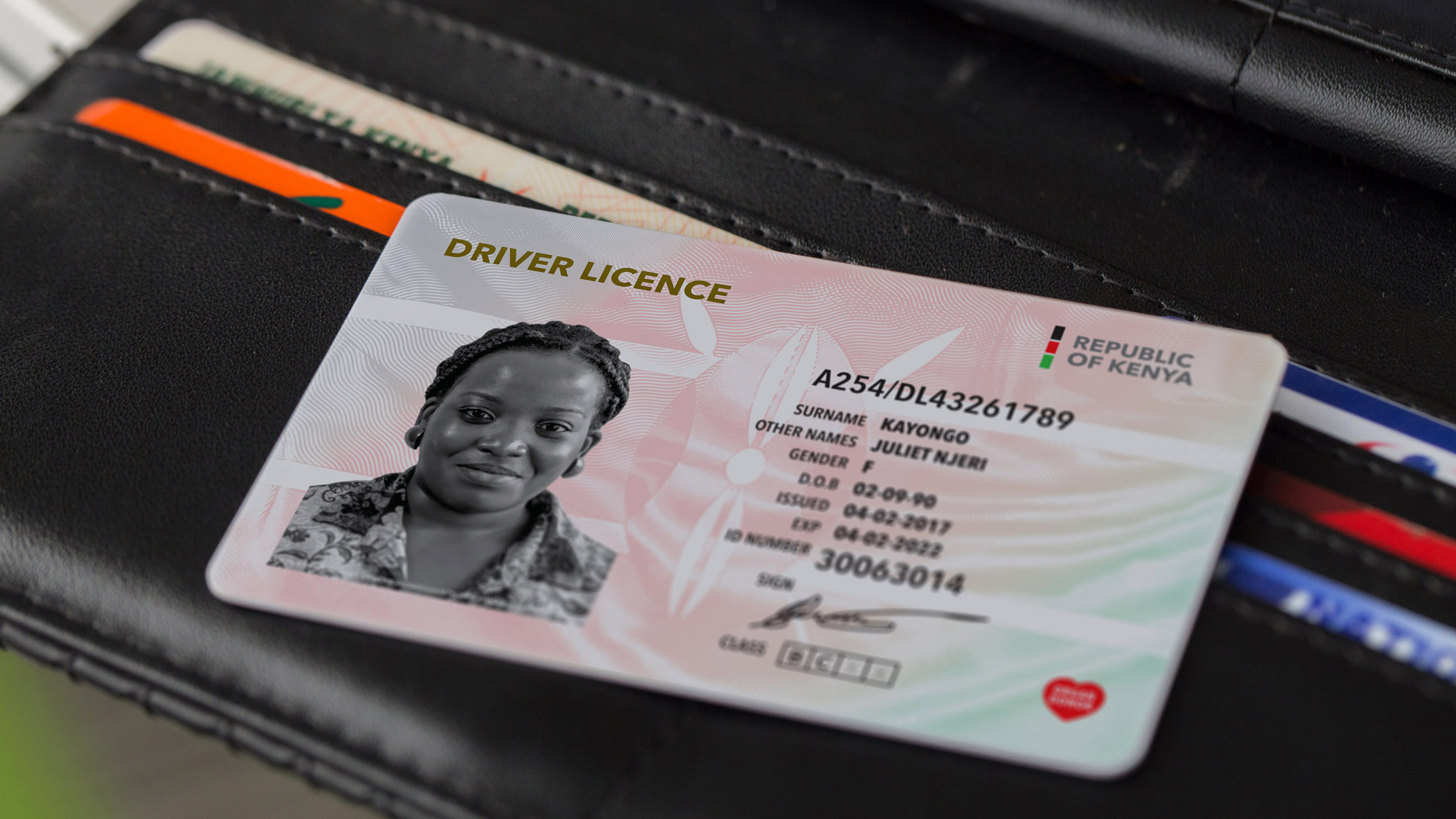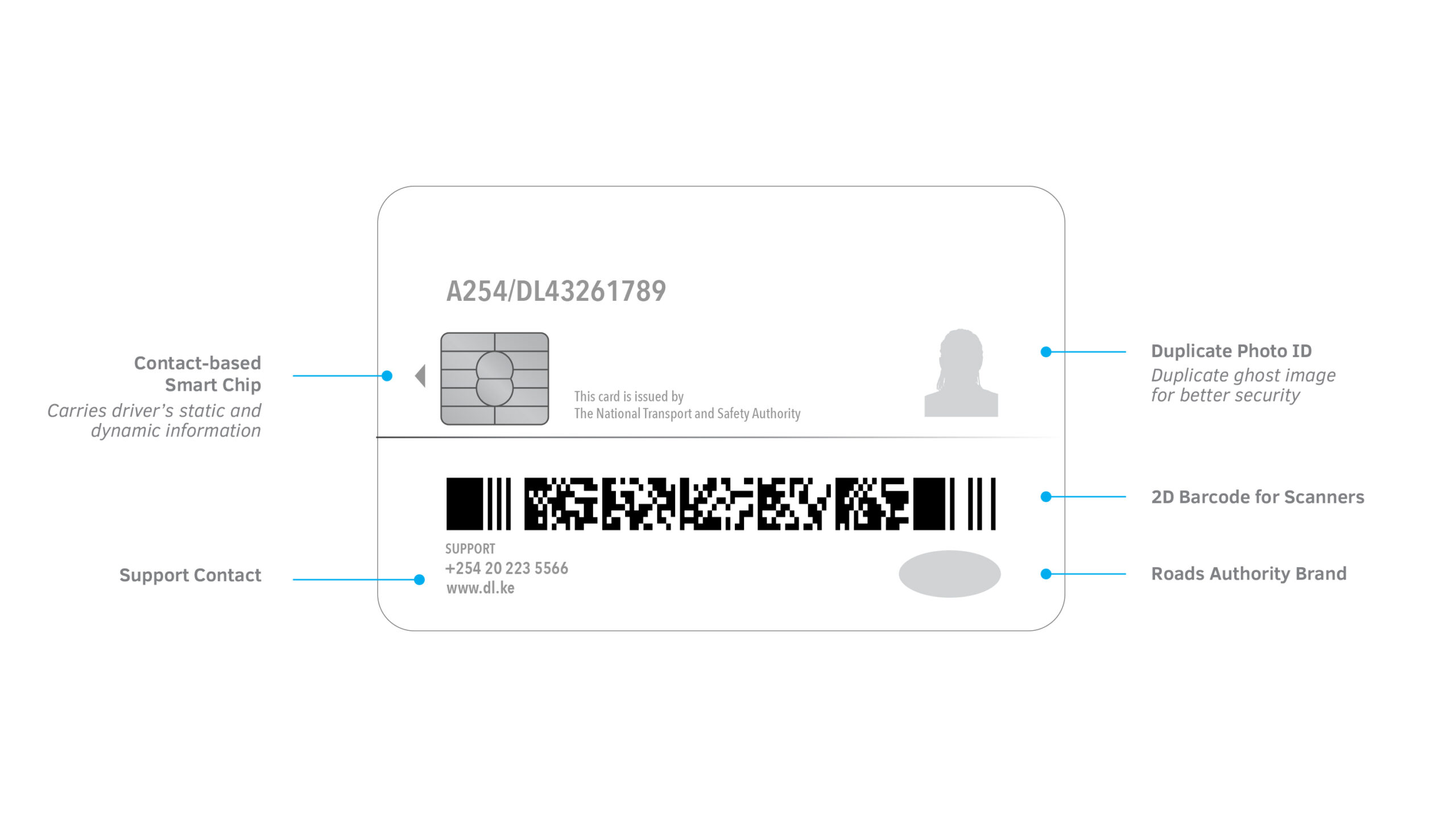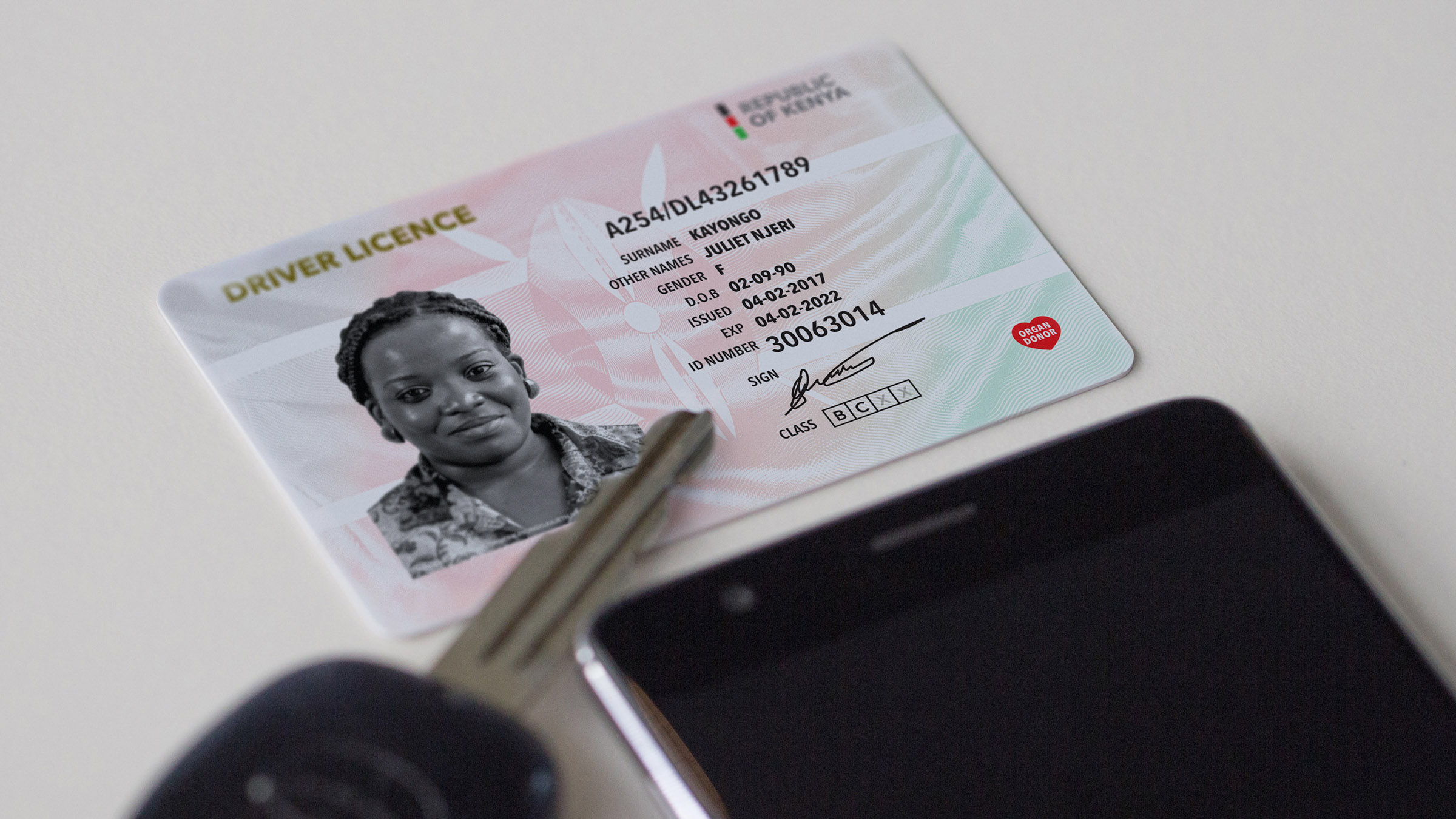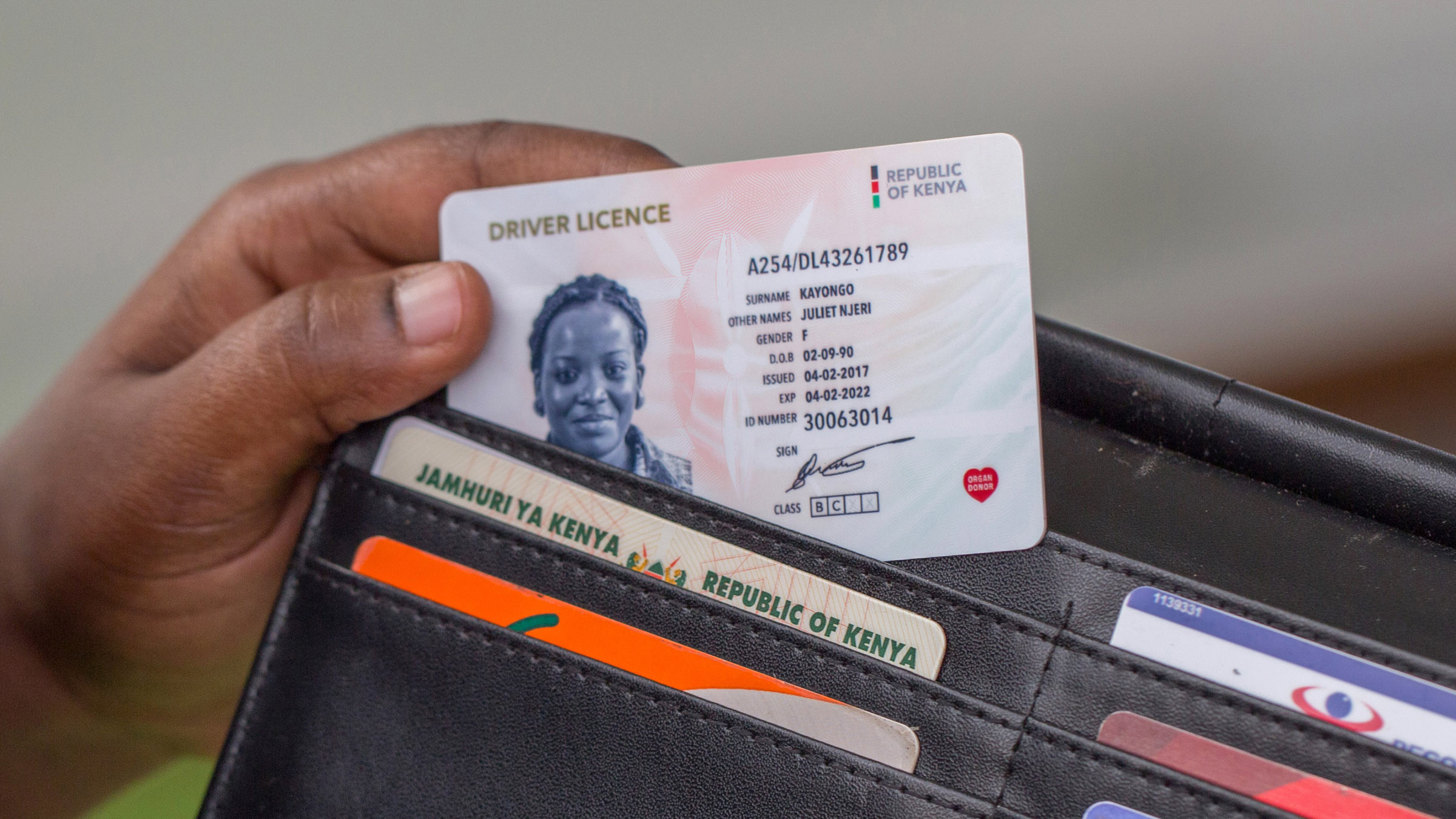+HUMAN DESIGN LAB
Driving Licence Redesign
Redesigning a smart platform for road safety, stating with the simple driver's licence.
Over a period of 9 decades the Kenyan licence hasn’t changed much. That’s shocking. It means that our licences and systems to support motoring are long outdated . Road safety, corruption and another inadvertent effects are the fruits of a stunted system. The only way to address the challenges posed is through an overhaul of not only how our driving licences look but also how they work.
Common Challenges
If you know the right guy downtown, you can easily acquire a very convincing counterfeit driving licence. It doesn’t take much to replicate the canvas outer cover and flimsy inner bits of paper. Open the bi-fold document and you’ll see that the driver’s information is partially filled-in by hand. Anyone could write anything.
Many drivers think that their license is valid as soon as received but it’s actually not ‘activated’ until signed. Hearing the words “hauja sign” during an encounter with the authorities can quickly bring the driver scores of problems.
Take your licence with you abroad and you will likely be the subject of a few suspect looks. The rest world has moved on to modern, plastic (some smart) cards. In comparison, our driver’s licences look more like an 8 year old’s homemade arts and crafts assignment rather than an official document.
It’s bulky too. It can’t fit in your standard sized wallet and carrying it around in your hand, pocket or bag easily wears out the licence. Contact with water, particularly on the inner pages, causes permanent damage.

Addressing Driving Issues
To us, a successful redesign of the Kenyan driving licence would mean:
• improved road safety
• fighting roadside corruption
• simplified processes related to driving
• broadened use of the document
We realise it’s a tall order that will take time to actualise but with gradual progressive steps, we can get there.
Big things have small beginnings
–Prometheus
System Change
To meet the above objectives we would need to shift from a paper system to an electronic system. “Electronic? Why not digital? That’s the future.” We hear you. You’re right. The reason we say electronic rather than digital is that a fully digital driver’s licence would connote a version that is usable either on a smartphone or other digital device – without needing a physical card for validation. This is possible and currently being tested and rolled out in a few countries around the world. We may head in that direction in the further future. Moving to electronic first will easier enable future technologies.
New Licence Design Proposal

We propose a multifunctional, advanced and simple to use system.
In its physical form our design proposal is a double-sided, credit-card sized, plastic card. All relevant holder information will be printed on the front and back including: photo, full names, D.O.B, signature, gender, and ID number. Information will also be stored in the contact-based smart chip. All features are designed to meet the aforementioned objectives.
A point based system will sit behind the card. It will encourage diligent driving by penalising dangerous or careless drivers.
Every holder starts off with maximum points. Good behaviour allows the holder to retain their points, bad behaviour loses the holder points. After loss of a specific number of points, the holder’s licence can either be suspended or revoked. To reinstate their licence the holder must either wait out their suspension period or pay heavy fines and fees.
A smarter future


Convenient
Holders can easily carry it around. It’s lighter and easily fits in a standard sized wallet or purse.
Law enforcement can quickly verify the holder’s identity, driving history and assign on-the-spot fines and penalties.
Other parties (e.g. mpesa, banks, liquor shops) can quickly verify the holder’s identity and age.
Issuing authorities can expand their services to include validating identity, holder background information.
Smart
The contact based smart chip allows law enforcement to read user information pertaining to the driver’s history i.e violations, restrictions and fines incurred.
Law enforcement can also input violations by inserting the smart chip into a card reader. The system would then automatically deduct points, issue on-the-spot fines or impose restrictions based on the severity of the infringement or violation. This saves on time, resources and manual processing & handling costs.
Holders can view their personal info, track their points and driving record online or through an app. These channels would also contain information on road rules regarding offences and penalties.
More information on the driver and their driving history would subsequently open the doors to better car insurance models. Insurance companies would be able to offer products and services vis-á-vis driver history. Those with a ‘good’ record get lower premiums while those with a ‘bad’ history incur higher premiums.
Secure
Inbuilt security features make the new licence difficult to duplicate thus limiting the production of fake licenses and ability of middle-men to interfere with the acquisition process. These are significant steps towards ensuring that all drivers are properly trained and licensed.
Interoperable
It would make sense for Kenya to create agreements with neighbouring countries where there is heavy cross-border traffic. Creating a standard to specify the data required for compatibility e.g biometrics, will allow Kenyan police to inspect the licences of partner-state holders, for example Tanzania and Uganda, and vice versa. This would ease intra East African Community travel, working similarly to the EAC e-passport.
Expanded Usability
The security and credibility of the new licence presents the opportunity to transcend motoring. There are many benefits to be realised from creating a multifaceted tool for:
- Proof of age
- Identity validation – local travel, mpesa, financial institutions, car rental etc.
- Payment function – linkage with county parking systems e.g. eJijiPay to enable parking payment, payment at toll stations and small on-the-spot fines.


Next… we’ll be exploring the development of a points/demerits system linked to driver safety and offence records.